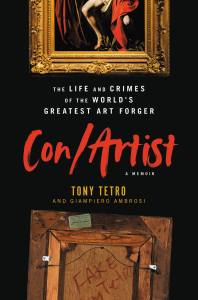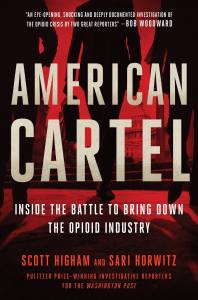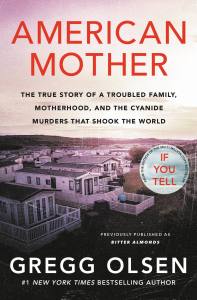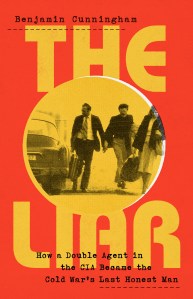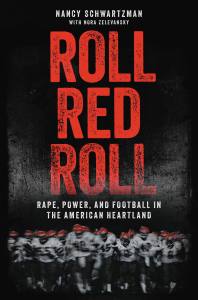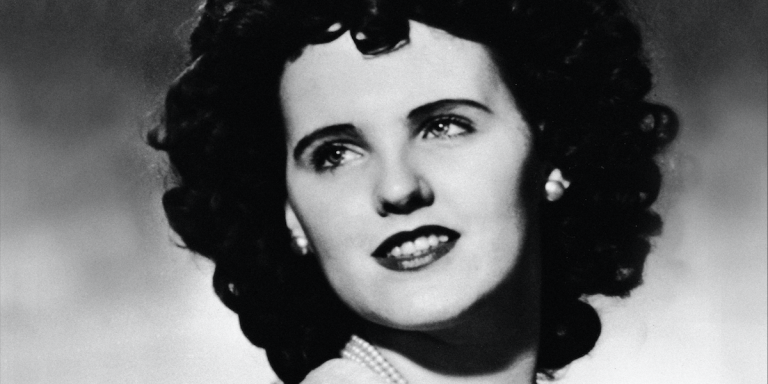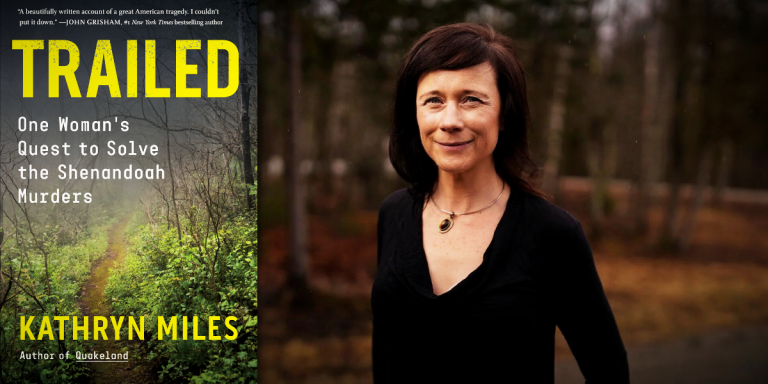10 of the Best True Crime Books of 2022

Chilling real stories of families fighting against the odds, cold cases being resolved, investigators uncovering hidden secrets, and more. These are our top ten picks for the best true crime books of the year.
Forensic anthropologist Erin Kimmerle investigates of the notorious Dozier Boys School—the true story behind the Pulitzer Prize–winning novel The Nickel Boys—and the contentious process to exhume the graves of the boys buried there in order to reunite them with their families.
The Arthur G. Dozier Boys School was a well-guarded secret in Florida for over a century, until reports of cruelty, abuse, and “mysterious” deaths shut the institution down in 2011. Established in 1900, the juvenile reform school accepted children as young as six years of age for crimes as harmless as truancy or trespassing. The boys sent there, many of whom were Black, were subject to brutal abuse, routinely hired out to local farmers by the school’s management as indentured labor, and died either at the school or attempting to escape its brutal conditions.
In the wake of the school’s shutdown, Erin Kimmerle, a leading forensic anthropologist, stepped in to locate the school’s graveyard to determine the number of graves and who was buried there, thus beginning the process of reuniting the boys with their families through forensic and DNA testing. The school’s poorly kept accounting suggested some thirty-one boys were buried in unmarked graves in a remote field on the school’s property. The real number was at least twice that. Kimmerle’s work did not go unnoticed; residents and local law enforcement threatened and harassed her team in their eagerness to control the truth she was uncovering—one she continues to investigate to this day.
The art world is a much dirtier, nastier business than you might expect. Tony Tetro, one of the most renowned art forgers in history, will make you question every masterpiece you’ve ever seen in a museum, gallery, or private collection. Tetro’s “Rembrandts,” “Caravaggios,” “Miros,” and hundreds of other works now hang on walls around the globe. In 2019, it was revealed that Prince Charles received into his collection a Picasso, Dali, Monet, and Chagall, insuring them for over 200 million pounds, only to later discover that they’re actually “Tetros.” And the kicker? In Tony’s words: “Even if some tycoon finds out his Rembrandt is a fake, what’s he going to do, turn it in? Now his Rembrandt just became motel art. Better to keep quiet and pass it on to the next guy. It’s the way things work for guys like me.” The Prince Charles scandal is the subject of a forthcoming feature documentary with Academy Award nominee Kief Davidson and coauthor Giampiero Ambrosi, in cooperation with Tetro.
Throughout Tetro’s career, his inimitable talent has been coupled with a reckless penchant for drugs, fast cars, and sleeping with other con artists. He was busted in 1989 and spent four years in court and one in prison. His voice—rough, wry, deeply authentic—is nothing like the high society he swanned around in, driving his Lamborghini or Ferrari, hobnobbing with aristocrats by day, and diving into debauchery when the lights went out. He’s a former furniture store clerk who can walk around in Caravaggio’s shoes, become Picasso or Monet, with an encyclopedic understanding of their paint, their canvases, their vision. For years, he hid it all in an unassuming California townhouse with a secret art room behind a full-length mirror. (Press #* on his phone and the mirror pops open.) Pairing up with coauthor Ambrosi, one of the investigative journalists who uncovered the 2019 scandal, Tetro unveils the art world in an epic, alluring, at times unbelievable, but all-true narrative.
AMERICAN CARTEL is an unflinching and deeply documented dive into the culpability of the drug companies behind the staggering death toll of the opioid epidemic. It follows a small band of DEA agents led by Joseph Rannazzisi, a tough-talking New Yorker who had spent a storied thirty years bringing down bad guys; along with a band of lawyers, including West Virginia native Paul Farrell Jr., who fought to hold the drug industry to account in the face of the worst man-made drug epidemic in American history. It is the story of underdogs prevailing over corporate greed and political cowardice, persevering in the face of predicted failure, and how they found some semblance of justice for the families of the dead during the most complex civil litigation ever seen.
The investigators and lawyers discovered hundreds of thousands of confidential corporate emails and memos during courtroom combat with legions of white-shoe law firms defending the opioid industry. One breathtaking disclosure after another—from emails that mocked addicts to invoices chronicling the rise of pill mills—showed the indifference of big business to the epidemic’s toll. The narrative approach echoes such work as A Civil Action and The Insider, moving dramatically between corporate boardrooms, courthouses, lobbying firms, DEA field offices, and Capitol Hill while capturing the human toll of the epidemic on America’s streets.
At 5.02 pm on June 5, 1986, an emergency call came into the local sheriff’s office in the small town of Auburn, Washington State. A distressed housewife, Stella Nickell, said her husband Bruce was having a seizure. Officers rushed to the Nickell’s mobile home, to find Stella standing frozen at the door… Bruce was on the floor fighting for his life.
As Stella became the beneficiary of over $175,000 in a life insurance pay-out, forensics discovered that Bruce had consumed painkillers laced with cyanide.
A week later, fifteen-year-old Hayley was getting ready for another school day. Her mom, Sue, called out ‘I love you’ before heading into the bathroom and moments later collapsed on the floor. Sue never regained consciousness, and the autopsy revealed she had been poisoned by cyanide tainted headache pills. Just like Bruce.
While a daughter grieved the sudden and devastating loss of her mother, a young woman, Cindy, was thinking about her own mom Stella. She thought about the years of neglect and abuse, the tangled web of secrets Stella had shared with her, and Cindy contemplated turning her mom into the FBI…
Gripping and heart-breaking, Gregg Olsen uncovers the shocking true story of a troubled family. He delves into a complex mother-daughter relationship rooted in mistrust and deception, and the journey of the sweet curly-haired little girl from Oregon whose fierce ambition to live the American Dream led her to make the ultimate betrayal
In the early hours of July 10, 2016, gunshots rang out and a young man lay fatally wounded on a quiet Washington, DC, street. But who killed Seth Rich? When he was buried in his hometown, his rabbi declared: “There are no answers for a young man gunned down in the prime of his life.” The rabbi was wrong. There were in fact many answers, way too many.
In the absence of an arrest, a howling mob filled the void. Wild speculation and fantastical theories surfaced on social media and gained traction thanks to a high-level cast of provocateurs. But it wasn’t until Fox News took the rumors from the fringes to the mainstream that Seth Rich’s life and death grew into something altogether unexpected—one of the foundational conspiracy theories of modern times.
A Death on W Street unravels this gripping saga of murder, madness, and political chicanery, one that would ensnare Hillary Clinton and Steve Bannon, a popular pizzeria in northwest DC and the most powerful voices in American media. It's the story of an idealistic twenty-seven-year-old political staffer who became a tragic victim of the culture wars, until his family decided that they had no choice but to defend his name and put an end to the cruel deceptions that surrounded his death.
A relentless detective and an amateur genealogist solve a haunting cold case—and launch a crime-fighting revolution that tests the fragile line between justice and privacy.
In November 1987, a young couple on an overnight trip to Seattle vanished without a trace. A week later, the bodies of Tanya Van Cuylenborg and her boyfriend Jay Cook were found in rural Washington. It was a brutal crime, and it was the perfect crime: With few clues and no witnesses, an international manhunt turned up empty, and the sensational case that shocked the Pacific Northwest gradually slipped from the headlines.
In deep-freeze, long-term storage, biological evidence from the crime sat waiting, as Detective Jim Scharf poured over old case files looking for clues his predecessors missed. Meanwhile, 1,200 miles away in California, CeCe Moore began her lifelong fascination with genetic genealogy, a powerful forensic tool that emerged not from the crime lab, but through the wildly popular home DNA ancestry tests purchased by more than 40 million Americans. When Scharf decided to send the cold case’s decades-old DNA to Parabon NanoLabs, he hoped he would finally bring closure to the Van Cuylenborg and Cook families. He didn’t know that he and Moore would make history.
Genetic genealogy, long the province of family tree hobbyists and adoptees seeking their birth families, has made headlines as a cold case solution machine, capable of exposing the darkest secrets of seemingly upstanding citizens. In the hands of a tenacious detective like Scharf, genetic genealogy has solved one baffling killing after another. But as this crime-fighting technique spreads, its sheer power has sparked a national debate: Can we use DNA to catch the murderers among us, yet still protect our last shred of privacy in the digital age—the right to the very blueprint of who we are?
In the mid-1970s, the CIA and KGB watched Karel Koecher closely—they were both convinced he was working for the enemy. And they were both right. Traveling with his wife, Hana, Koecher posed as a Czechoslovak asylum seeker and arrived in the US as a Communist sleeper agent. After parlaying a doctorate from Columbia into a job at the CIA, Koecher proceeded to operate as a double agent at the height of the Cold War.
Shunning a low profile, the Koechers embraced Manhattan’s high life—with cocaine, swinging, and parties emblematic of the times and their penchant for risk. Hana, who was no more than a shy teenager when she arrived, grew into a sophisticated international diamond dealer who relayed messages to Karel’s handlers. Riding a wave of euphoria, the Koechers felt unstoppable. But it was too good to last.
Using newly declassified documents, interrogation tapes, and extraordinary firsthand accounts from the Koechers themselves, Cunningham reconstructs their double lives and the fading Cold War, where a strange moral fog made it hard to know what truth was being fought for, and to what end.
I order another bourbon, neat. This is the drink that will flip the switch. I don’t even know how I got here, to this place, to this point. Something is happening to me lately. I’m drinking too much. My sheets are soaking wet when I wake up from nightmares of decaying corpses. I order another drink and swig it, trying to forget about the latest case I can’t shake.
Crime solving for me is more complex than the challenge of the hunt, or the process of piecing together a scientific puzzle. The thought of good people suffering drives me, for better or worse, to the point of obsession. People always ask how I am able to detach from the horrors of my work. Part of it is an innate capacity to compartmentalize; the rest is experience and exposure, and I’ve had plenty of both. But I have always taken pride in the fact that I can keep my feelings locked up to get the job done. It’s only been recently that it feels like all that suppressed darkness is beginning to seep out.
When I look back at my long career, there is a lot I am proud of. I have caught some of the most notorious killers of the twenty-first century and brought justice and closure for their victims and families. I want to tell you about a lifetime solving these cold cases, from Laci Peterson to Jaycee Dugard to the Pittsburg homicides to, yes, my twenty-year-long hunt for the Golden State Killer.
But a deeper question eats at me as I ask myself, at what cost? I have sacrificed relationships, joy—even fatherhood—because the pursuit of evil always came first. Did I make the right choice? It’s something I grapple with every day. Yet as I stand in the spot where a young girl took her last breath, as I look into the eyes of her family, I know that, for me, there has never been a choice. “I don’t know if I can solve your case,” I whisper. “But I promise I will do my best.”
It is a promise I know I can keep.
In 2016, on stage at Wembley Arena in front of thousands of adoring fans, Dr. Ruja Ignatova promised her followers a financial revolution. The future, she said, belonged to cryptocurrencies such as Bitcoin. And the Oxford-educated, self-styled cryptoqueen vowed that she had invented the Bitcoin Killer. OneCoin would not only earn its investors untold fortunes; it would change the world.
By March 2017, more than $4 billion had been invested in OneCoin in countries all around the world. But by October 2017, Ruja Ignatova had disappeared, and it slowly became clear that her revolutionary cryptocurrency was not all it seemed. Fortune was left asking, “Is OneCoin the biggest financial fraud in history?”
In The Missing Cryptoqueen, acclaimed tech journalist Jamie Bartlett tells the story he began in his smash hit BBC podcast, entering the murky worlds of little-regulated cryptocurrencies and multilevel marketing schemes. Through a globe-crossing investigation into the criminal underworlds, corrupt governments, and the super-rich, he reveals a very modern tale of intrigue, techno-hype and herd madness that allowed OneCoin to become a million-person pyramid scheme—where, at the top, investors were making millions and, at the bottom, people were putting their livelihoods at risk. It’s the inside story of the smartest and biggest scam of the 21st Century—and the genius behind it, who is still on the run.
In 1873 the people of Labette County, Kansas made a grisly discovery. Buried by a trailside cabin beneath an orchard of young apple trees were the remains of countless bodies. Below the cabin itself was a cellar stained with blood. The Benders, the family of four who once resided on the property were nowhere to be found. The discovery sent the local community and national newspapers into a frenzy that continued for decades, sparking an epic manhunt for the Benders.
The idea that a family of seemingly respectable homesteaders—one among the thousands relocating farther west in search of land and opportunity after the Civil War—were capable of operating "a human slaughter pen" appalled and fascinated the nation. But who the Benders really were, why they committed such a vicious killing spree and whether justice ever caught up to them is a mystery that remains unsolved to this day. Set against the backdrop of postbellum America, Hell’s Half-Acre explores the environment capable of allowing such horrors to take place. Drawing on extensive original archival material, Susan Jonusas introduces us to a fascinating cast of characters, many of whom have been previously missing from the story. Among them are the families of the victims, the hapless detectives who lost the trail, and the fugitives that helped the murderers escape.
Honorable Mention
In football-obsessed Steubenville, Ohio, on a summer night in 2012, an incapacitated sixteen-year-old girl was repeatedly assaulted by members of the “Big Red” high school football team. They took turns documenting the crime and sharing on Facebook, Twitter, and YouTube. The victim, Jane Doe, learned the details via social media at a time when teens didn’t yet understand the lasting trail of their digital breadcrumbs. Crime blogger Alexandria Goddard, along with hacker collective Anonymous, exposed the photos, Tweets, and videos, making this the first rape case ever to go viral and catapulting Steubenville onto the national stage.
Filmmaker Nancy Schwartzman spent four years embedded in the town, documenting the case and its reverberations. Ten years after the assault, Roll Red Roll is the culmination of that research, weaving in new interviews and personal reflections to take readers beyond Steubenville to examine rape culture in everything from sports to teen dynamics. Roll Red Roll explores the factors that normalize sexual assault in our communities. Through interviews with sportswriter David Zirin, victim’s rights attorney Gloria Allred and more, Schwartzman untangles the societal norms in which we too often sacrifice our daughters to protect our sons. With the Steubenville case as a flashpoint that helped spark the #MeToo movement, a decade later, Roll Red Roll focuses on the perpetrators and asks, can our society truly change?
By clicking 'Sign Up,' I acknowledge that I have read and agree to Hachette Book Group’s Privacy Policy and Terms of Use
